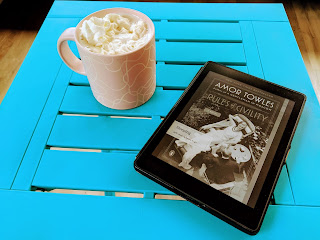Posts
Showing posts from July, 2020
REVIEW: Watching You Without Me by Lynn Coady
- Get link
- X
- Other Apps
REVIEW: Rules of Civility by Amor Towles
- Get link
- X
- Other Apps
REVIEW (part one): The Count of Monte Cristo by Alexandre Dumas
- Get link
- X
- Other Apps
DNF (sort of) The Shell Collector by Hugh Howey
- Get link
- X
- Other Apps




